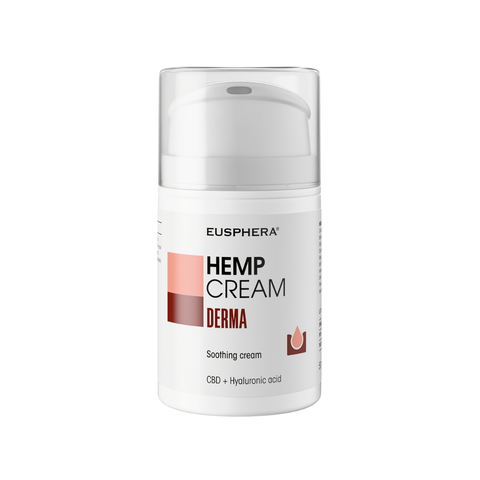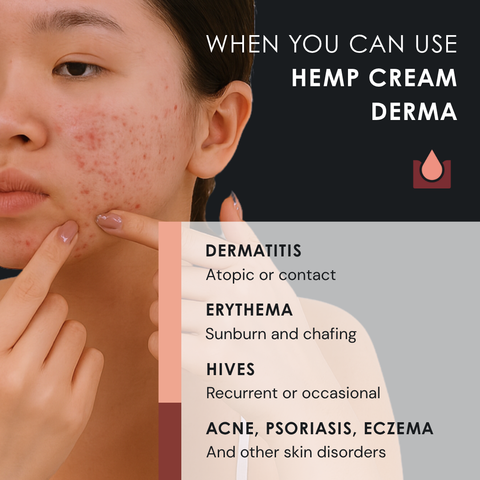Long, sunny days make us think that summer is the perfect season for our four-legged friends, but that’s not always the case. When heat, sudden noises, or changes in routine become overwhelming, even the happiest dog can turn into a stressed pup struggling to relax. Here’s an overview to understand, prevent, and manage summer stress in dogs, supported by the latest scientific evidence and a detailed look at the role of CBD-based products.
What is stress in dogs and why it shouldn’t be underestimated
Before talking about solutions, it’s important to clarify what we’re dealing with. Stress and anxiety are physiological and behavioral responses that, if prolonged, can affect appetite, sleep, the immune system, and even the skin. Recognizing the behaviors of a stressed and anxious dog early and intervening with appropriate remedies reduces the risk of stress becoming chronic or leading to more complex disorders.
The main causes of summer stress in dogs
Summer arrives, and we change schedules, plans, maybe even cities. All of this, combined with high temperatures, creates a mix of stimuli that our four-legged friend might not handle well. That’s why it’s important to pay close attention to every possible trigger.
1. High temperatures and heatstroke. Overheating is one of the most insidious causes of physical stress. Early signs include excessive panting, drooling, and reddened mucous membranes. If not addressed, the risk of heatstroke increases.
2. Fireworks and loud noises. Sudden noises, especially during the season of festivals and outdoor concerts, can trigger true panic attacks. Studies on dogs with noise phobia have shown how fireworks can raise heart rate and cause trembling.
3. Changes in family routine. Vacations, different work schedules, children home from school: every alteration in the daily routine is perceived by the dog. For sensitive dogs, even the arrival of guests can cause unease.
4. Travel, trips, or stays at kennels. Car transport or staying in unfamiliar environments can increase cortisol levels and vocalizations. A recent study showed that a single 15-minute trip is enough to raise stress parameters.
5. Increased stimulation (guests, noise, children at home). More people, more noise, less quiet space: a perfect cocktail for sensory overload, especially in dogs not used to domestic chaos.
H2 - Symptoms of stress in dogs: how to recognize them
Just like in humans, the signs can be both physical and behavioral. The most common include:
· panting for no apparent reason,
· destroying objects,
· trembling,
· hiding,
· avoiding eye contact,
· excessive barking,
· among the dermatological symptoms of stress in dogs, compulsive paw licking, hot spots (pyotraumatic dermatitis), and dandruff are common.
For example, a dog that scratches or licks excessively due to stress may develop dermatitis from licking or scratching.
Natural remedies to calm your dog in summer
The good news is that simple daily measures can be adopted to prevent the problem, effectively reducing stress and anxiety caused by heat and the environmental changes typical of the summer season.
Besides creating a comfortable and cool environment, it’s possible to use natural remedies such as supplements made from calming herbs, safe essential oils, or relaxation techniques.
Each of the following sections includes practical tips to offer effective and safe solutions for the well-being of your four-legged friend.
1. Cool and comfortable environment
Setting up well-shaded areas, using cooling mats, and ensuring good natural ventilation are essential strategies to keep your dog safe from the risk of overheating during hot days. It’s also important to avoid direct sun exposure during the hottest hours and to make sure your dog always has access to fresh, clean water.
Remember: a dog that frequently shakes its head or shows signs of restlessness might be stressed not only by the heat but also by the presence of insects like flies, which can cause discomfort and irritation. Creating a comfortable and protected environment thus helps preserve both physical and psychological well-being
2. Reassuring routines
Maintaining consistent schedules for walks, meals, and rest times helps reduce your dog’s anxiety by creating a sense of security and control over their surroundings. The repetition and predictability of daily activities act as a true antidote to stress, lowering nervous tension and improving overall well-being. Additionally, a well-established routine makes it easier for the dog to adapt to seasonal changes or new situations, providing a stable reference point to rely on.
3. Exercise limited to the coolest hours
Scheduling your dog’s physical activities in the early morning or after sunset helps avoid the intense heat that can jeopardize their health. Moderate exercise during these times promotes the release of endorphins, which improve mood and overall well-being without causing excessive increases in body temperature. Additionally, walking on cool, shaded surfaces reduces the risk of burns and fatigue, while consistent hydration during and after exercise helps keep your dog energetic and safe.
4. Pheromones and Bach flower remedies
According to some controlled studies, the use of diffusers or collars with canine appeasing pheromones (DAP) reduces noise-related fear in dogs. On the other hand, a 2010 clinical study showed that Bach flower remedies do not have efficacy beyond that of a placebo.
5. CBD-based products and nutraceuticals
An increasing number of studies support the use of veterinary-quality CBD for animal well-being. Among the formulations available on the market, EU4Dog CBD oil has been specially developed for pets and is recommended by veterinarians: THC-free, it ensures safety and effectiveness thanks to a clear and transparent technical data sheet, offering a reliable option for those seeking natural remedies for their four-legged friend.
6. Targeted nutrition and constant hydration
A balanced diet, rich in natural antioxidants and Omega-3 fatty acids, is fundamental in supporting the health of the skin and the proper functioning of the dog’s nervous system. These nutrients help counteract oxidative stress and reduce inflammation, contributing to the animal’s overall well-being. Often, a dog licks its paws as a response to skin irritations caused by stress or allergies; in these cases, supplementing with EPA and DHA can help relieve inflammation and improve the skin barrier. Additionally, ensuring constant hydration, especially during the hottest months, is essential to maintain skin elasticity and prevent further discomfort related to heat and dehydration
Role of CBD in managing canine stress
Cannabidiol, extracted from industrial hemp and free of psychoactive effects, is generating increasing interest in veterinary clinical practice. But what does science say about it?
· A crossover study showed that a single dose of CBD is able to reduce both vocalizations and heart rate in dogs, both during solitude and car travel.
· Another trial, conducted on dogs exposed to the fireworks test, confirmed a significant decrease in fear scores.
· Furthermore, a 2024 study demonstrated the safety of CBD administered at a dose of 2 mg/kg per day for 12 weeks, without any changes in hematological and biochemical parameters.
· Finally, other authors suggest a dosage between 2 and 4 mg/kg, divided into two daily administrations, always under careful veterinary monitoring.
CBD should always be introduced gradually, starting with a reduced dose for 3-4 days to assess the individual animal’s tolerance. It is essential to consult the veterinarian before combining CBD with other medications, especially those metabolized by the liver, to avoid potential harmful interactions. A dog showing behaviors such as scratching due to stress can benefit from the mood improvement induced by CBD, which helps reduce stress-related dermatitis; in these cases, combining it with specific topical remedies can ensure more effective and lasting relief.
If your four-legged friend shows symptoms of stress (such as compulsive licking or irritability), it is important to define a comprehensive strategy together with the veterinarian that includes cool environments, stable routines, quality nutraceuticals, and, if indicated, certified CBD products for dogs. This way, you can turn summer into a period of true well-being, leaving behind agitation, barking, and tension, and fully enjoy the time spent together.














